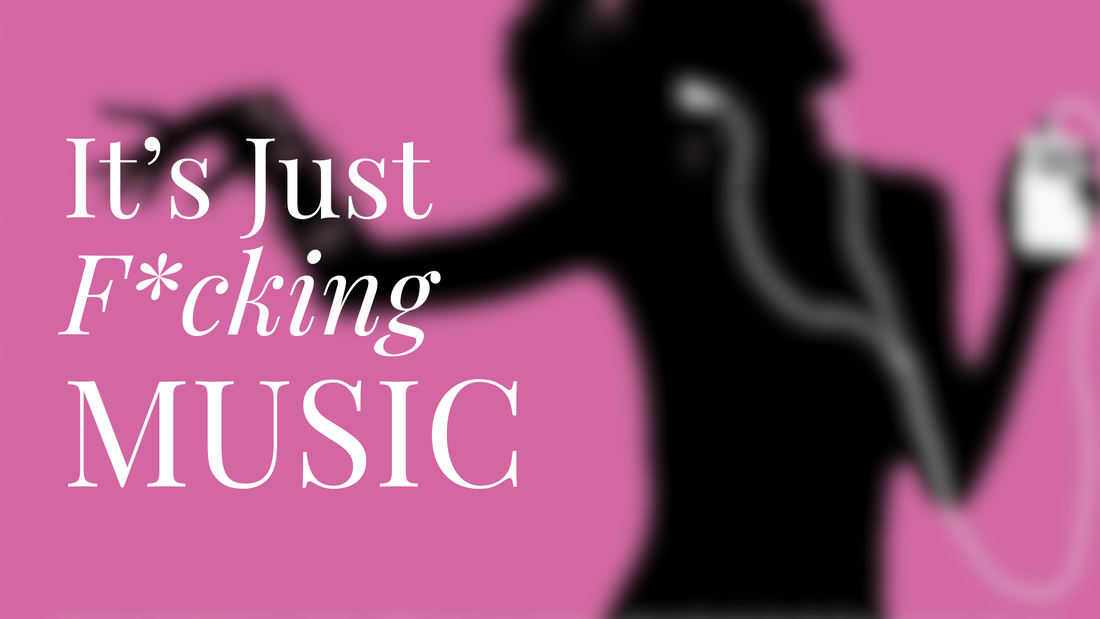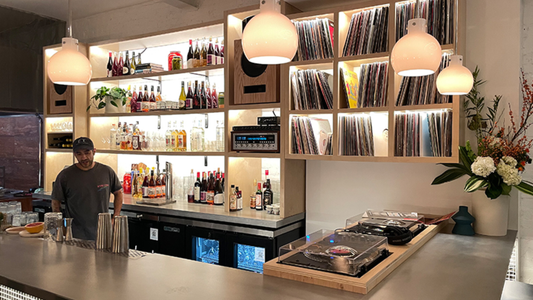
The Return of the Listener
By Rafi Mercer
There are cycles in culture that move too slowly to see in real time.
They begin not with a press release or a product launch, but with a feeling — a faint disquiet that the pace has become unsustainable.
Then, somewhere in the static, a sound appears.
A quieter rhythm, patient and human.
For those of us who grew up with the whirr of the Walkman or the click of the CD tray, there was a moment when music felt tactile — something you held, turned over, cared for.
Then came Steve Jobs and the little white box that changed everything.
Apple gave us motion — mobility, pace, acceleration.
For the first time, we carried the world’s music in our pockets. We could move faster, hear more, switch tracks with a flick. It was astonishing, and it was inevitable.
But like every revolution, it carried a shadow.
The easier music became to access, the easier it became to ignore.
That was the quiet trade we made: convenience for connection. We gained immediacy and lost intimacy.
And yet — even in that moment of triumph, the counter-movement had already begun.
Every cultural acceleration contains its opposite force. It was always going to come back to this: to stillness, to presence, to the ritual of sound that demands attention.
Listening, after all, is not a transaction.
It’s a skill.
One that takes time to cultivate and care to sustain.
To listen deeply is to give the world your full sensory fidelity — to hear the air between notes, the space in a room, the weight of silence before a piano strikes.
It’s the rarest kind of luxury in an economy built on distraction.
That’s what Tracks & Tales stands for. It isn’t nostalgia, and it isn’t retro fetishism. It’s a recalibration — the return of the listener.
Across the world, from Shibuya to Shoreditch, people are stepping into bars that sound better than they look. Rooms where the record matters more than the crowd. Spaces designed not for noise, but for notice.
Inside, something subtle happens.
The mind slows.
The drink tastes different.
You begin to feel the dimensions of the room by ear — the weight of the bass, the shimmer of the cymbals, the distance between you and the horn.
The sound becomes architectural, physical, present. You start listening not to the music, but through it.
We built Tracks & Tales to map this return — not as critics or curators, but as witnesses to a cultural correction.
Each venue we write about is a small act of resistance to the algorithm.
Each essay a reminder that attention is a muscle.
Each reader, each early listener, part of something unfolding quietly but unmistakably: a movement that measures value in resonance, not reach.
The vinyl revival was never about fashion; it was about friction — the beauty of having to do something to hear something. The needle drop, the sleeve, the sleeve note, the patience.
Those rituals slowed us down just enough to remember that music is not background. It’s foreground.
And this is the paradox of our age: the faster the world gets, the more we crave the slow.
The more digital the day, the more we seek the analogue night.
We’ve reached a point where the rarest experience isn’t having access to everything — it’s giving your attention to one thing, fully, without interruption.
That’s what it means to be an early listener.
Not a subscriber, not a user, but a participant in a new kind of culture — one that values the quality of hearing over the quantity of sound. It’s the beginning of a new rhythm: slower, deeper, more deliberate.
Over the next months, we’ll keep documenting the world’s most inspiring sound venues — those that turn listening into architecture. But beyond that, we’re here to help you rediscover what listening actually feels like. Because it was always going to come back to this.
To vinyl and valve amplifiers.
To whisky and warmth.
To attention as art.
To listening as life.
See you, Rafi
Rafi Mercer writes about the spaces where music matters.
For more stories from Tracks & Tales, subscribe here, or click here to read more.







